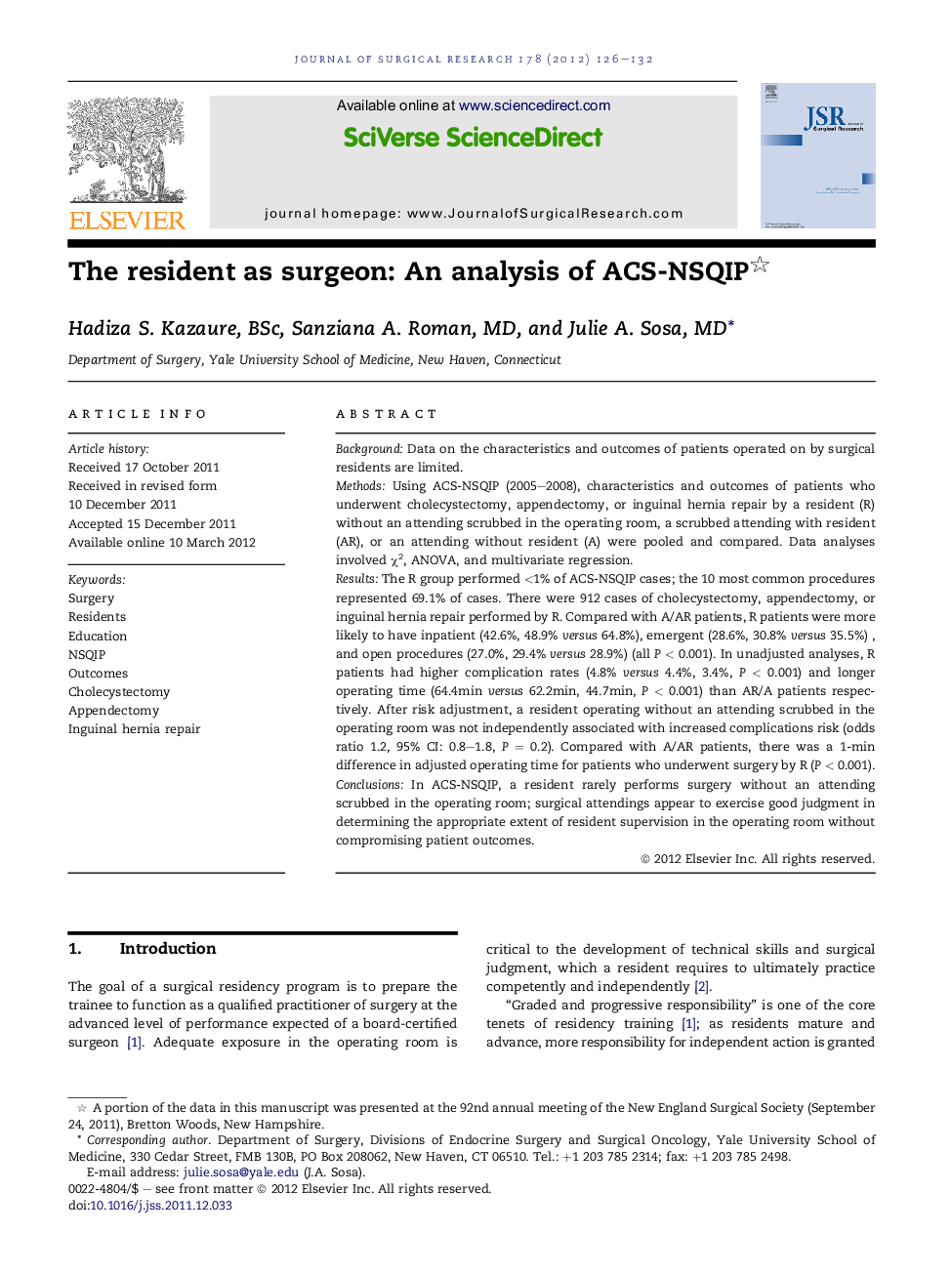| Article ID | Journal | Published Year | Pages | File Type |
|---|---|---|---|---|
| 4301374 | Journal of Surgical Research | 2012 | 7 Pages |
BackgroundData on the characteristics and outcomes of patients operated on by surgical residents are limited.MethodsUsing ACS-NSQIP (2005–2008), characteristics and outcomes of patients who underwent cholecystectomy, appendectomy, or inguinal hernia repair by a resident (R) without an attending scrubbed in the operating room, a scrubbed attending with resident (AR), or an attending without resident (A) were pooled and compared. Data analyses involved χ2, ANOVA, and multivariate regression.ResultsThe R group performed <1% of ACS-NSQIP cases; the 10 most common procedures represented 69.1% of cases. There were 912 cases of cholecystectomy, appendectomy, or inguinal hernia repair performed by R. Compared with A/AR patients, R patients were more likely to have inpatient (42.6%, 48.9% versus 64.8%), emergent (28.6%, 30.8% versus 35.5%) , and open procedures (27.0%, 29.4% versus 28.9%) (all P < 0.001). In unadjusted analyses, R patients had higher complication rates (4.8% versus 4.4%, 3.4%, P < 0.001) and longer operating time (64.4min versus 62.2min, 44.7min, P < 0.001) than AR/A patients respectively. After risk adjustment, a resident operating without an attending scrubbed in the operating room was not independently associated with increased complications risk (odds ratio 1.2, 95% CI: 0.8–1.8, P = 0.2). Compared with A/AR patients, there was a 1-min difference in adjusted operating time for patients who underwent surgery by R (P < 0.001).ConclusionsIn ACS-NSQIP, a resident rarely performs surgery without an attending scrubbed in the operating room; surgical attendings appear to exercise good judgment in determining the appropriate extent of resident supervision in the operating room without compromising patient outcomes.
